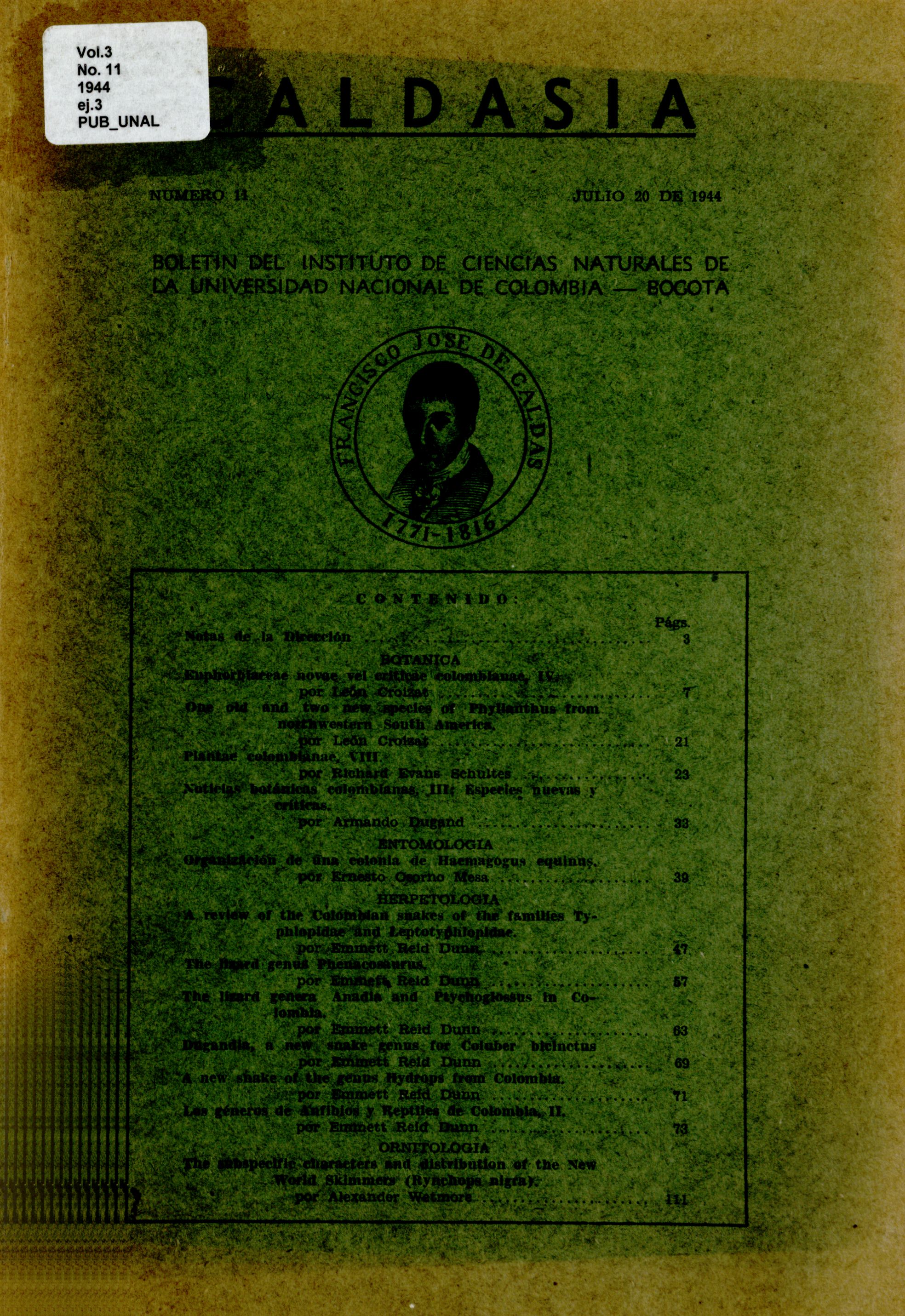The lizard genera Anadia and Ptychoglossus in Colombia
Palabras clave:
Anadia, Ptychoglossus, Lizard, Tropical America, Euspondylus, Pantodactylus (es)Anadia, Ptychoglossus, Lizard, Tropical America, Euspondylus, Pantodactylus (en)
Descargas
Study of the available Colombian material of these genera necessitates the description of a new Anadia, the transference of a species described as an Anadia to the related genus Ptychoglossus, and affords a definite locality in Colombia for the type species of Anadia, hitherto known only from "Tropical America??". Anadia and Ptychoglossus agree in having the scales in transverse rings, the ventrals continuous with, rather than separated from, the laterals and dorsals, and in having prefrontal plates. They differ in that Anadia has squarish, flat dorsals, while in Ptychoglossus they are narrow, elongate, and more or less keeled. In neither genus are the dorsals separated from the ventrals by smaller scales, as they are in Euspondylus, nor is there an oblique arrangement of the laterals, as there is in Pantodactylus. In Anadia the dorsals of one ring may follow those of the next or they may alternate with them (or some follow and some alternate), whereas in Ptychoglossus the alternation
is regular.Study of the available Colombian material of these genera necessitates the description of a new Anadia, the transference of a species described as an Anadia to the related genus Ptychoglossus, and affords a definite locality in Colombia for the type species of Anadia, hitherto known only from "Tropical America??". Anadia and Ptychoglossus agree in having the scales in transverse rings, the ventrals continuous with, rather than separated from, the laterals and dorsals, and in having prefrontal plates. They differ in that Anadia has squarish, flat dorsals, while in Ptychoglossus they are narrow, elongate, and more or less keeled. In neither genus are the dorsals separated from the ventrals by smaller scales, as they are in Euspondylus, nor is there an oblique arrangement of the laterals, as there is in Pantodactylus. In Anadia the dorsals of one ring may follow those of the next or they may alternate with them (or some follow and some alternate), whereas in Ptychoglossus the alternation is regular.
Cómo citar
APA
ACM
ACS
ABNT
Chicago
Harvard
IEEE
MLA
Turabian
Vancouver
Descargar cita
Visitas a la página del resumen del artículo
Descargas
Licencia
Derechos de autor 1944 Caldasia

Esta obra está bajo una licencia internacional Creative Commons Atribución 4.0.
Aquellos autores/as que tengan publicaciones con esta revista, aceptan los términos siguientes:
- Los autores/as conservarán sus derechos de autor y garantizarán a la revista el derecho de primera publicación de su obra, el cual estará simultáneamente sujeto a la Licencia de reconocimiento de Creative Commons que permite a terceros compartir la obra siempre que se indique su autor y su primera publicación esta revista.
- Los autores/as podrán adoptar otros acuerdos de licencia no exclusiva de distribución de la versión de la obra publicada (p. ej.: depositarla en un archivo telemático institucional o publicarla en un volumen monográfico) siempre que se indique la publicación inicial en esta revista.
- Se permite y recomienda a los autores/as difundir su obra a través de Internet (p. ej.: en archivos telemáticos institucionales o en su página web) antes y durante el proceso de envío, lo cual puede producir intercambios interesantes y aumentar las citas de la obra publicada. (Véase El efecto del acceso abierto).
























